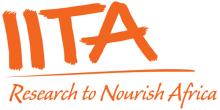Resource information
The importance of cassava relative to other crops in the cropping system was almost total; cassava was present in 70% of arable fields; maize and beans or peas were each present in 13% of arable fields and all other crops were present in 4%. Cassava was produced mostly for sale, yet it was not as important around market centers as in remote areas because imported rice and wheat products were easily accessible. Cassava land area was not expanding in many of the villages visited because of low-level processing technologies, difficult market access conditions, and because consumers had easy access to imported cereals in the market centers. There were virtually no bred cassava varieties at the farm level. Farmers were selecting genotypes with a large canopy among local landraces because of weed problems and because cassava leaves were widely harvested for human consumption as vegetables. Farmers in high population density areas were selecting early bulking genotypes while others were selecting genotypes which had good in ground storage qualities in the vast areas where fallow rotation was practiced. The available landraces had low genetic potential for root yield as most of them were susceptible to cassava plant pests/diseases especially African cassava mosaic disease. The majority of the cassava producers relied mainly on crop rotation, fallow management, and cultivar selection from among the available landraces for the control of cassava mealybug, cassava green mite, African cassava mosaic disease, and cassava bacterial blight. Although population pressure on land was low in comparison with other countries studied, the mean root yield was below the average for the other countries. The factors which were driving the yield in some of the other countries were lacking. Intensified land-use practices were not adopted because population pressure on land was low. Purchased inputs including high-yielding varieties were not used because access to market was poor for most places while easy access to imported rice and wheat products discouraged farmers around the market centers from investing in the use of the purchased inputs. Cassava was widely processed into two major products, chikwangwe, a convenient food product which was available in ready-to-serve form, and cossette which required further processing and elaborate cooking at home. Chikwangwe was made more in remote areas than in commercial areas. Market demand was limited by easy access to imported rice and wheat for bread. Labor-saving technologies were not adopted in making these products; cassava processing was therefore manual and very laborious. The consequence was that cassava processing did not stimulate expanded cassava production in the Democratic Republic of Congo as it did in West Africa.



